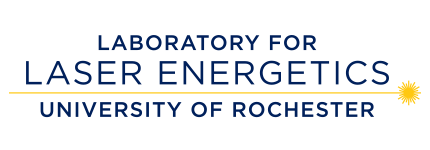Part 2 of 2 Parts (Please read Part 1 first)
The work on this project was conducted by a team of designers and experimentalists. Designers are scientists who run computer programs that carry out complicated physics calculations to simulate experiments. Experimentalists are engineers who understand and operate the world’s biggest laser. They determine the best way to test in practice what works in the simulations of the designers.
Some of the members of the team work in both roles. Others specialize as either designers or experimentalists depending on what the research team needs for a given phase of the work. Sixteen days’ worth of NIF experimental time was spread out over more than five years as part of the source development effort. Tests of the three designs that exhibited the best performance were conducted during a single day of NIF operation in 2019. These three designs were selected for detailed discussion in the report that was published.
Heather Whitley is the associate program director for High Energy Density Science at the LLNL. She developed the initial design for a large diameter polar direct drive capsule with Craxton and Garcia from the LLE and Warren Garbwett from the U.K. Atomic Weapons Establishment. She said, “This platform is important because it provides high neutron fluences and enables the close positioning of samples near the source for survivability experiments. The polar direct drive configuration also provides excellent diagnostic access for other high temperature plasma physics experiments.”
Craxton from the LLE helped lead the efforts of undergraduate students Garcia and Yang. He said that the participation of the graduate students has been very important for the work of the team. Each of these students was responsible for calculating the optimized laser beam pointing to achieve uniform implosion of a capsule with a specific diameter. This process of optimization is complicated because the NIF beam entry angles are being optimized to drive a cylindrical hohlraum target. (In radiation thermodynamics, a hohlraum is a cavity whose walls are in radiative equilibrium with the radiant energy inside the cavity.) McKenty worked closely with Craxton and the rest of the project team to determine the best laser pulse shape.
Craxton said, “We went through a whole series of experiments over many years, first to produce neutrons to test NIF neutron diagnostics while the NIF was being commissioned. These experiments evolved to meet the needs of a wide variety of applications, with the largest targets producing the high yields required for the effects experiments.”
Critical to the success of this effort was the development and creation of the proper testing protocols that were necessary to obtain key data for prescribing safe fielding pressures of these capsules. They are two to five millimeters in diameter with thin walls that are approximately ten to thirty micrometers thick. The work on these capsules was done by target fabrication teams mainly at General Atomics (GA) in San Diego who worked closely with the LLNL target fabrication team as well as the physics team mentioned above. Claudia Shuldberg and her team led the work at GA. Bill Saied and Kelly Youngblood headed up the target fabrication engineering effort at the LLNL.
